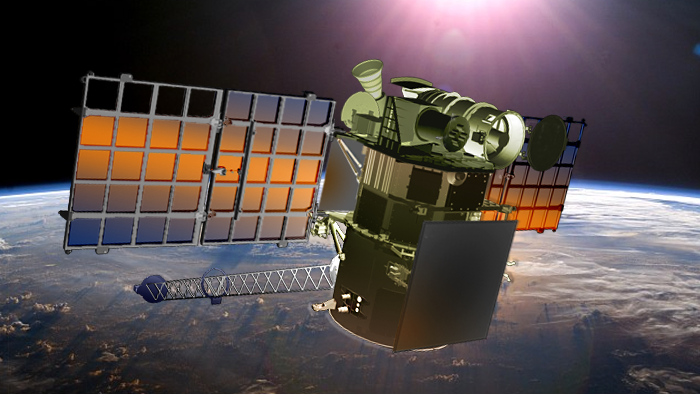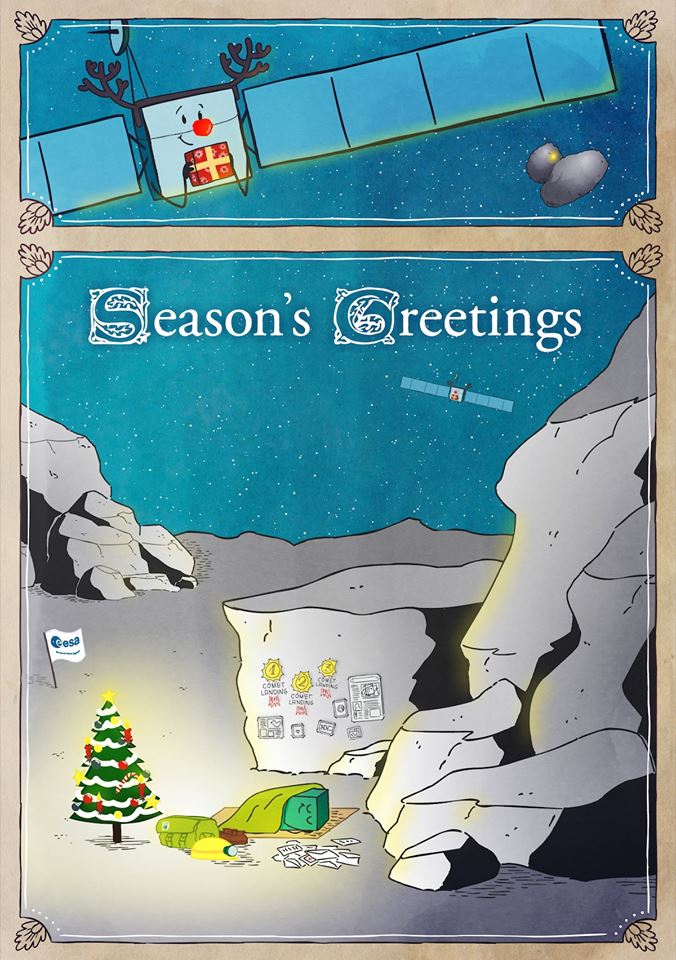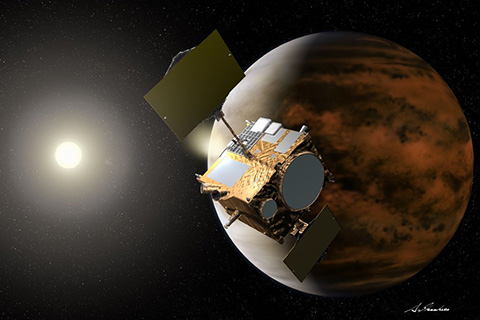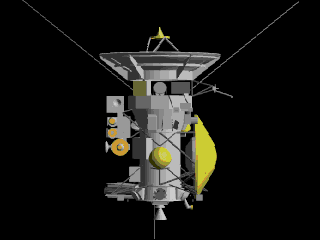Space Exploration
From Bwtm
| Revision as of 23:02, 19 January 2015 Beachblogger (Talk | contribs) Results and Presentations ← Previous diff |
Revision as of 04:50, 22 January 2015 Beachblogger (Talk | contribs) Venus Express Next diff → |
||
| Line 134: | Line 134: | ||
| Europe’s Venus Express mission is at its end http://spaceflightnow.com/2014/12/18/europes-venus-express-mission-at-its-end/ | Europe’s Venus Express mission is at its end http://spaceflightnow.com/2014/12/18/europes-venus-express-mission-at-its-end/ | ||
| + | |||
| + | ==MESSENGER spacecraft to orbit Mercury== | ||
| + | |||
| + | ===Mission=== | ||
| + | |||
| + | To become the first spacecraft to orbit Mercury, MESSENGER followed a path through the inner solar system, including one flyby of Earth, two flybys of Venus, and three flybys of Mercury. This impressive journey yielded the first return of new spacecraft data from Mercury since the Mariner 10 mission more than 30 years ago. Here you can find details about that journey, the MESSENGER spacecraft, and the instrument payload. | ||
| + | |||
| + | ===Images=== | ||
| + | |||
| + | http://messenger.jhuapl.edu/images/rotatePics/File6a.jpg | ||
| ==Voyager== | ==Voyager== | ||
Revision as of 04:50, 22 January 2015
This page is about the exploration of space.
Contents |
Dawn
Mission: explore asteroid Vesta and dwarf planet Ceres
Dawn delves into the unknown, drives new technology innovations, and achieves what's never been attempted before. As a mission belonging to NASA’s Discovery Program, Dawn has orbited one member of the main asteroid belt, Vesta, and is now heading to explore a second new world, dwarf planet Ceres.
Dawn's goal is to characterize the conditions and processes of its earliest history by investigating in detail two of the largest protoplanets remaining intact since their formation. Ceres and Vesta reside in the main asteroid belt, the extensive region between Mars and Jupiter, along with many other smaller bodies. Each followed a very different evolutionary path, constrained by the diversity of processes that operated during the first few million years of solar system evolution. When Dawn visits Ceres and Vesta, the spacecraft steps us back in solar system time.
- See more at: http://dawn.jpl.nasa.gov/mission/#sthash.dSlCEEaN.dpuf
Images
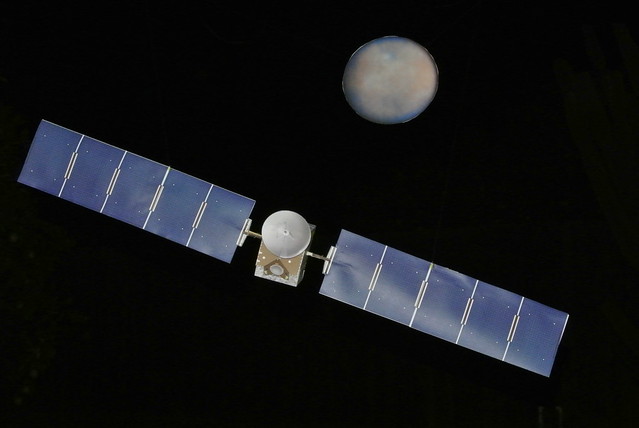
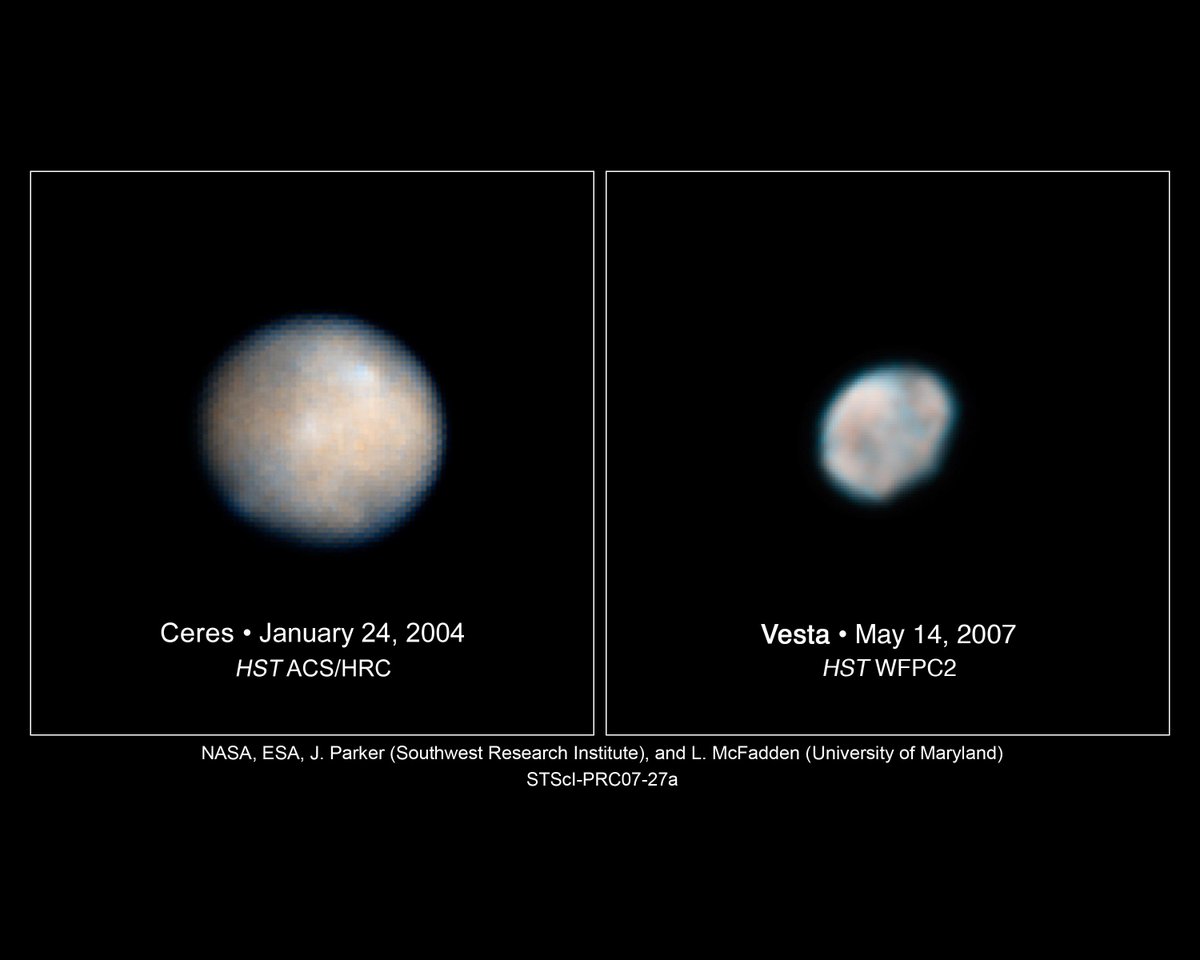
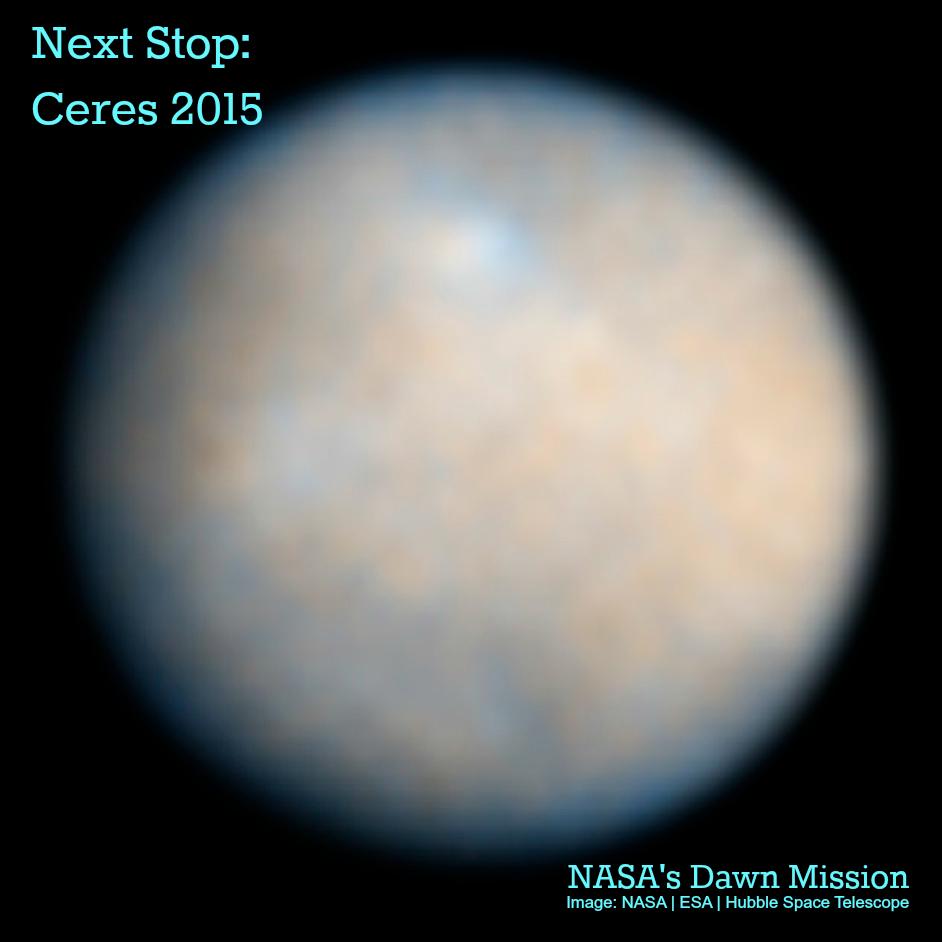
Asteroid Vesta • Clementine Color Ratio Animation http://youtu.be/wBm14ZS7wGM
news update
2015: NASA’s Year of the Dwarf Planet. by TIM REYES on DECEMBER 29, 2014 http://www.universetoday.com/117291/2015-nasas-year-of-the-dwarf-planet/
New Horizons
Mission: first reconnaissance of the planet Pluto
http://en.wikipedia.org/wiki/New_Horizons
Voyage to an Unexplored Planet and a New Realm. The New Horizons mission will help us understand worlds at the edge of our solar system by making the first reconnaissance of the planet Pluto and by venturing deeper into the distant, mysterious Kuiper Belt – a relic of solar system formation.
The Journey: New Horizons launched on Jan. 19, 2006; it swung past Jupiter for a gravity boost and scientific studies in February 2007, and will conduct a five-month-long reconnaissance flyby study of Pluto and its moons in summer 2015. Pluto closest approach is scheduled for July 14, 2015. As part of an extended mission, the spacecraft is expected to head farther into the Kuiper Belt to examine one or two of the ancient, icy mini-worlds in that vast region, at least a billion miles beyond Neptune’s orbit.
Sending a spacecraft on this long journey will help us answer basic questions about the surface properties, geology, interior makeup and atmospheres on these bodies.
http://www.nasa.gov/mission_pages/newhorizons/main/index.html#.VIyGYXtN-zk
This mission will complete the initial reconnaissance of the Solar System and help us understand worlds at the edge of it by making the first reconnaissance of the dwarf planet Pluto and by venturing deeper into the distant, mysterious Kuiper Belt – a relic of Solar System formation. http://thewatchers.adorraeli.com/2014/12/08/new-horizons-wakes-up-for-historic-pluto-encounter/
http://pluto.jhuapl.edu/news_center/news/AGU-NH-Workshop.pdf
Countdown clock http://www.seeplutonow.com
Papercraft
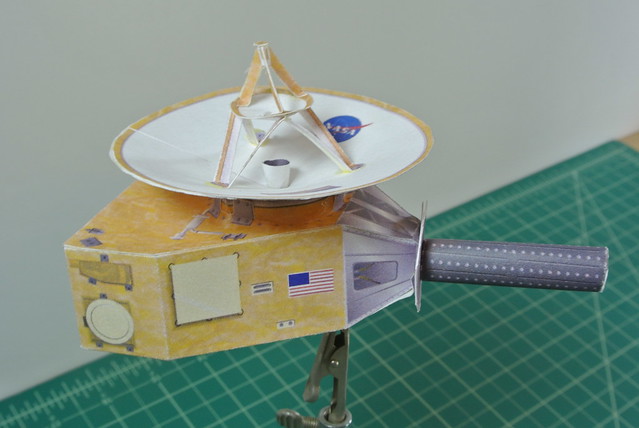
papercraft model of the New Horizon spacecraft which is on a mission to explore Pluto-Charon and the Kuiper Belt.
OSIRIS-REx
Mission
OSIRIS-REx will launch in September 2016, encountering asteroid Bennu in October 2018. The spacecraft will operate at asteroid Bennu for over 400 days. This 14-year mission will return a sample that scientists will study for decades with ever more capable instruments and new techniques.
http://www.asteroidmission.org/about-mission/
Images

Deep Space Climate Observatory (DSCOVR)
Mission
Solar wind – that is, the stream of charged electrons and protons that are released from the upper atmosphere of the Sun – is a constant in our Solar System and generally not a concern for us Earthlings. However, on occasion a solar wind shock wave or Coronal Mass Ejection can occur, disrupting satellites, electronics systems, and even sending harmful radiation to the surface.
Little wonder then why NASA and the National Oceanic and Atmospheric Administration (NOAA) have made a point of keeping satellites in orbit that can maintain real-time monitoring capabilities. The newest mission, the Deep Space Climate Observatory (DSCOVR) is expected to launch later this month.
A collaborative effort between NASA, the NOAA, and the US Air Force, the DSCOVR mission was originally proposed in 1998 as a way of providing near-continuous monitoring of Earth. However, the $100 million satellite has since been re-purposed as a solar observatory. http://www.universetoday.com/118029/new-mission-dscovr-satellite-will-monitor-the-solar-wind/
Images
Rossetta
Mission
Rosetta launched in 2004 and arrived at Comet 67P/Churyumov-Gerasimenko on 6 August 2014. It is the first mission in history to rendezvous with a comet, escort it as it orbits the Sun, and deploy a lander to its surface. Rosetta is an ESA mission with contributions from its member states and NASA. Rosetta's Philae lander is provided by a consortium led by DLR, MPS, CNES and ASI. http://rosetta.esa.int
blog http://blogs.esa.int/rosetta/
Comet 67P/Churyumov-Gerasimenko
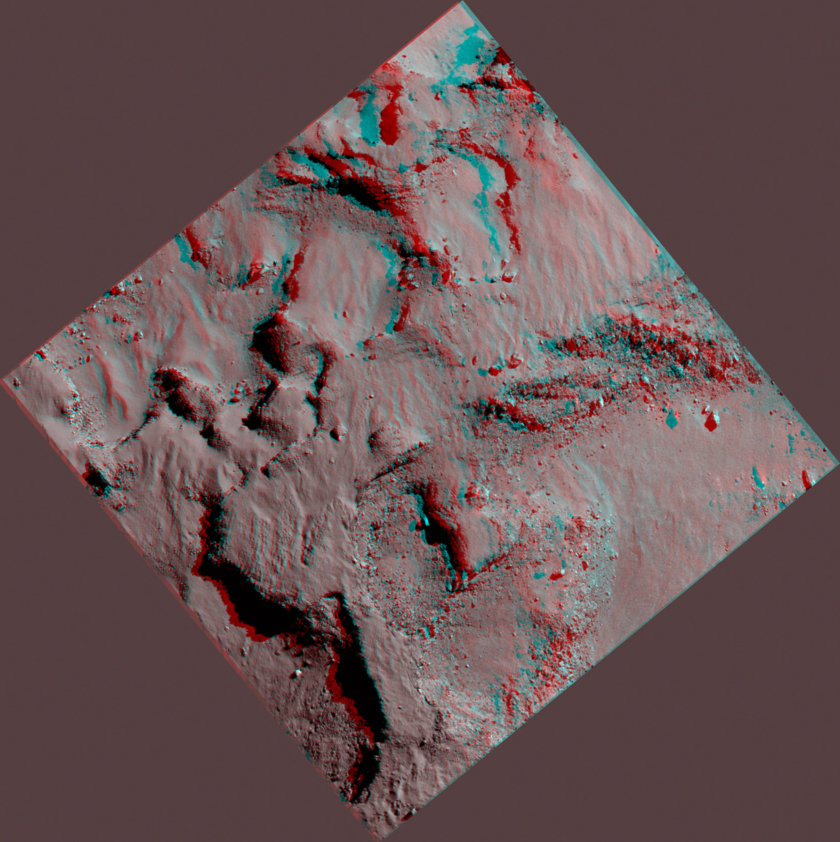
- Philae's landing site in 3D http://www.planetary.org/multimedia/space-images/small-bodies/philaes-landing-site-in-3d.html
Results and Presentations
Rosetta will prompt science images rethink. http://www.bbc.com/news/science-environment-30859411
Files to 'print your own' Rosetta comet. http://www.bbc.com/news/science-environment-29482548
https://virtualoptions.agu.org/search/rosetta
Japan’s Akatsuki mission
Mission
Back in 2010, the Japanese Aerospace Exploration Agency (JAXA) launched the The Venus Climate Orbiter “Akatsuki” with the intention of learning more about the planet’s weather and surface conditions. Unfortunately, due to engine trouble, the probe failed to make it into the planet’s orbit. Since that time, it has remained in a heliocentric orbit, some 134 million kilometers from Venus, conducting scientific studies on the solar wind. However, JAXA is going to make one more attempt to slip the probe into Venus’ orbit before its fuel runs out. Since 2010, JAXA has been working to keep Akatsuki functioning so that they could give the spacecraft another try at entering Venus’ orbit. http://www.universetoday.com/117974/japans-akatsuki-spacecraft-to-make-second-attempt-to-enter-orbit-of-venus-in-december-2015/
Images
Kepler Space Telescope
Mission
Images
Mars
Opportunity
Mission
Images

- Attention-span-challenged Mars rover reaches summit, snaps photo. NASA's Mars rover Opportunity provided striking photos of the Red Planet's landscape from the peak of 'Cape Tribulation.' http://www.csmonitor.com/Science/2015/0109/Attention-span-challenged-Mars-rover-reaches-summit-snaps-photo
Venus Express
Europe’s Venus Express mission is at its end http://spaceflightnow.com/2014/12/18/europes-venus-express-mission-at-its-end/
MESSENGER spacecraft to orbit Mercury
Mission
To become the first spacecraft to orbit Mercury, MESSENGER followed a path through the inner solar system, including one flyby of Earth, two flybys of Venus, and three flybys of Mercury. This impressive journey yielded the first return of new spacecraft data from Mercury since the Mariner 10 mission more than 30 years ago. Here you can find details about that journey, the MESSENGER spacecraft, and the instrument payload.
Images

Voyager
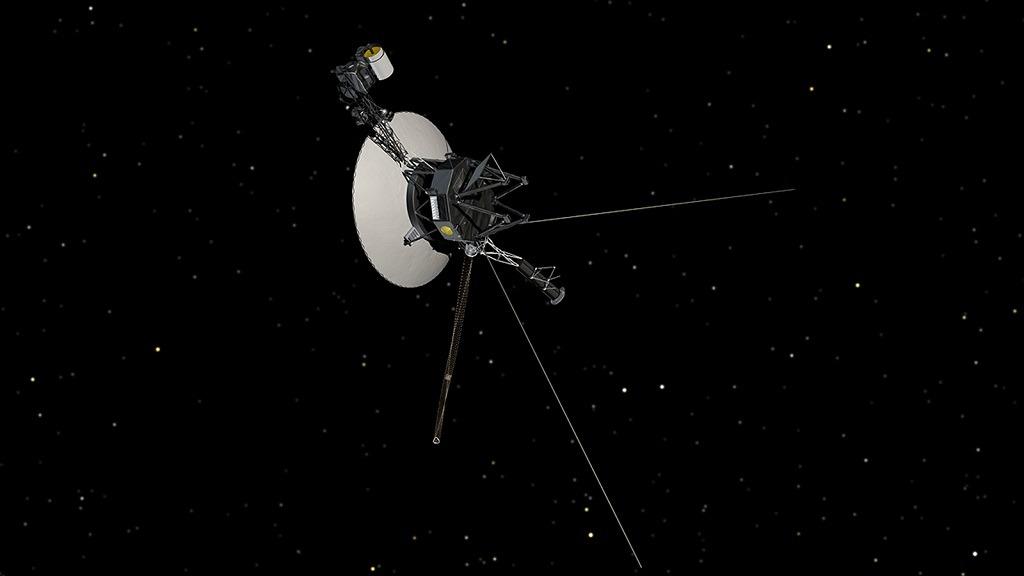
Voyager 1 and its twin spacecraft, Voyager 2, embarked on a grand tour of the Solar System in the 1980s when an unusual alignment made it easy for a spacecraft to swing from one to the other. Both spacecraft observed Jupiter and Saturn, and Voyager 2 travelled on to study Uranus and Neptune as well. The spacecraft are believed to have at least several more years of life in them, depending on the strength of their nuclear generators on board. - http://sen.com/news/voyager-spacecraft-overtaken-by-three-tsunami-waves-in-space
Cassini–Huygensi
Mission
Cassini–Huygens is an unmanned spacecraft sent to the planet Saturn. It is a flagship-class NASA–ESA–ASI robotic spacecraft sent to the Saturn system.[3] It has studied the planet and its many natural satellites since arriving there on June 30, 2004, also observing Jupiter and the heliosphere, and testing the theory of relativity. Launched in 1997 after nearly two decades of development, it includes a Saturn orbiter and an atmospheric probe/lander for the moon Titan called Huygens, which entered and landed on Titan in 2005. Cassini is the fourth space probe to visit Saturn and the first to enter orbit, and its mission is ongoing as of 2014. The two-part spacecraft is named after astronomers Giovanni Cassini and Christiaan Huygens. http://en.wikipedia.org/wiki/Cassini–Huygens
Huygens was an atmospheric entry probe that landed successfully on Saturn's moon Titan in 2005. Built and operated by the European Space Agency (ESA), it was part of the Cassini–Huygens mission and became the first spacecraft ever to land on Titan. The probe was named after the Dutch 17th-century astronomer Christiaan Huygens,[1] who discovered Titan in 1655. http://en.wikipedia.org/wiki/Huygens_(spacecraft)
Images
This true color mosaic of Jupiter was constructed from images taken by the narrow angle camera onboard NASA's Cassini spacecraft starting at 5:31 Universal time on December 29, 2000, as the spacecraft neared Jupiter during its flyby of the giant planet. It is the most detailed global color portrait of Jupiter ever produced; the smallest visible features are ~ 60 km (37 miles) across. The mosaic is composed of 27 images: nine images were required to cover the entire planet in a tic-tac-toe pattern, and each of those locations was imaged in red, green, and blue to provide true color. Although Cassini's camera can see more colors than humans can, Jupiter here looks the way that the human eye would see it. http://www.ciclops.org/view.php?id=79&js=1
Earth Observation
Sentinel-1A radar imaging satellite
Mission
Sentinel-1A is a European radar imaging satellite launched in 2014. http://en.wikipedia.org/wiki/Sentinel-1A
https://sentinel.esa.int/web/sentinel/home
Images

Links
Exoplanet Travel Series http://planetquest.jpl.nasa.gov/media_categories?category=6
http://hubblesite.org/newscenter/archive/releases/2010/06/image/a/
